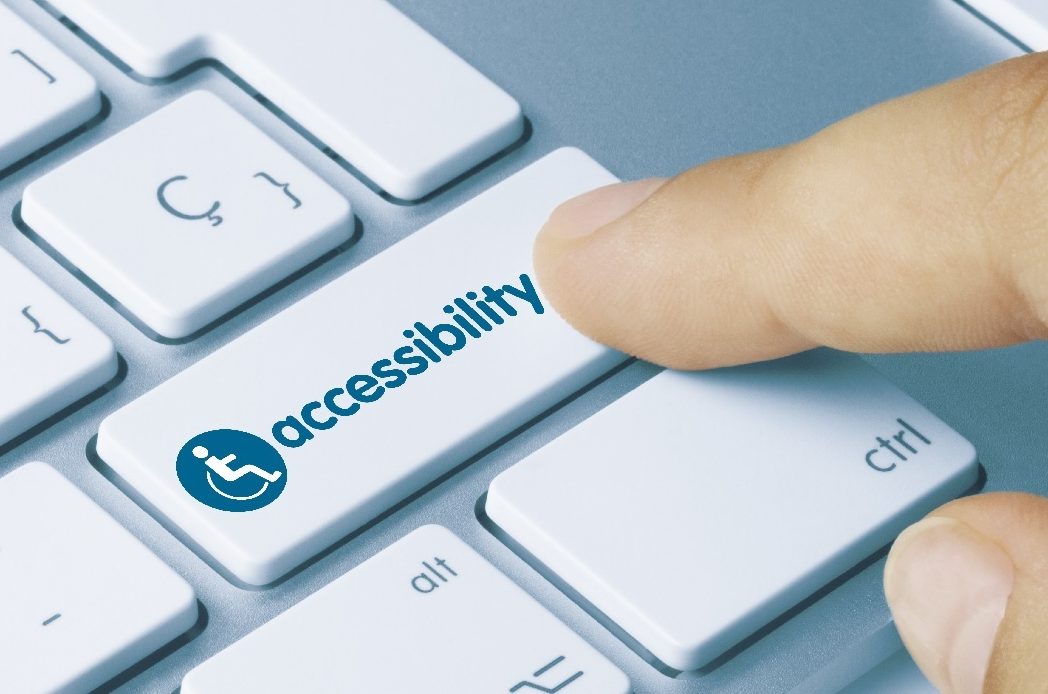What Exactly Is Digital Accessibility?

Digital accessibility makes digital settings and products accessible to people with a variety of disabilities, so they can use the service, product, or function.
The Americans with Disabilities Act (ADA), passed by the United States Congress in 1990, requires public and private venues to be accessible to people with sensory, cognitive, or physical impairments or limitations. The principles of the Americans with Disabilities Act have been broadened to include the use of assistive or adaptive technology in digital accessibility.
Audiobooks that convert text to speech, for example, can enable blind or partially sighted people to read closed-captioned video transcripts. Similarly, there are AI technologies available that can convert speech to text using AI as well, for people with difficulty hearing.
As a result of the World Wide Web’s impact, the Web Content Accessibility Guidelines (WCAG) were introduced in 1999. The Web Content Accessibility Guidelines (WCAG) are a set of guidelines for making web content more accessible to people with disabilities, as well as a guide for businesses on how to comply with the standards.
However, the measures do not guarantee that businesses will always follow them. Almost every webpage is thought to violate at least one WCAG criterion. Infractions include low-contrast text, missing text for image alternatives, textless buttons, and empty links.
Why Is Digital Content Access So Important?
For a variety of moral and legal reasons, including those listed below, digital accessibility should be a guiding concept for technology and website design.
ADA violations can result in steep fines and other consequences. If a company’s website is not accessible to people with disabilities, it may face fines and other monetary penalties, as well as legal fees and the need to redesign the website to comply.
More than one billion people, or 15% of the global population, are thought to be disabled. Potential customers may be lost as a result of inaccessible technology or websites, or they may be denied access to essential services.
Non-disabled website visitors can benefit from digital accessibility as well. Because of accessibility features, the majority of people can navigate a website more easily.
Developing an inclusive culture can help a company’s relationships with both its customers and its employees. Even though organizations have begun to focus on diversity, equality, and inclusion (DEI) initiatives and policies, much more work remains to be done.
What Are the Four Digital Accessibility Principles?
The acronym POUR refers to the four WCAG web accessibility principles that serve as the foundation of accessible web content.
Perceivable
When it comes to the user interface and content information, nothing should be hidden or inaccessible to the user. A disabled person should be able to access content in another way. People who are blind or partially sighted, for example, may need to use touch or audio to access the Internet, as opposed to the majority of people who access it visually.
Operable
Users should be able to navigate a website using the controls they are accustomed to using, even if the majority of visitors do not use them. Controls, buttons, and other interface elements that can be operated physically using various interaction methods, such as voice commands, should be included.
Comprehensible
Websites should be simple enough for all users to understand and not overly complicated. A website should be organized according to common usage patterns and work in the same way as other websites. The content should be presented in such a way that the end user understands its meaning and purpose.
Robust
Content must work equally well across a wide range of technologies and platforms, including PCs, mobile devices, and multiple web browsers.
If any of these four guidelines are violated, the website will be inaccessible to people with disabilities.
Images Demonstrating Digital Accessibility
The following are some typical examples of digital accessibility for a well-designed website:
Image Text
Screen readers and other assistive technologies can read text on a screen. Graphics, on the other hand, cannot be read. Everything visual must have a full-text equivalent, such as a description of the image or the words placed there. This may be required for flowcharts, schematics, graphs, maps, menu buttons, infographics, and explanatory PowerPoint slides.
Access to the Keyboard
A person with a disability may navigate using a keyboard rather than a mouse. On a fully keyboard-accessible website, tabs should be used to navigate logically and reliably between sections, menus, form fields, and links, as well as to other content regions.
Headings in Order
Sequential page titles are important not only for aesthetics but also for navigation and content organization. The material should be organized and displayed in a way that makes it easy to read and understand, and headers should be coded with actual heading components.
Links with Proper Formatting
Users with and without disabilities may encounter difficulties with hyperlinks due to characteristics such as light linking color. One of the most important factors for all consumers is a reliable connection. Users of reading aids frequently seek out identifiable hyperlinks. They do not, however, always appear. For a link to be properly constructed, the following three elements must be present:
Readability refers to not only the URL but also the common language.
Clarity denotes the link’s content.
By providing a description, uniqueness distinguishes the link from other content in the body text.
To provide a consistent user experience, all pages on a website should have the same or similar style, layout, and navigational controls (UX). This makes it easier for customers to navigate a website because they know their experience will be consistent and error-free. It is critical to use consistent icons and control elements and to place repeat navigation links, including skip links, in the same location on every page.
How Can Businesses Promote Digital Accessibility?
What can business owners do when so many websites fail to follow digital accessibility guidelines? The recommended practices listed below can help organizations with digital accessibility assistance and improvement:
Finish Your Homework
Examine the ADA’s implications for web accessibility.
Make a Strategy
Employees who will benefit from accessibility rules should be encouraged to participate in the development of an accessibility compliance plan.
Perform an Internal Audit
Businesses should audit their internal networks before developing externally facing services. Platforms that employees frequently use for meetings, sales, and support, among other job-related tasks, should be included. Learning how to create appropriate digital accessibility will be beneficial.
Pay Close Attention to Changes
Understanding the most recent protocols and resources is critical.
Summary
While this may appear to be a daunting task, we are here to help! QualityLogic has specialists who can help you navigate your systems and ensure their digital accessibility. To learn more about our services, please visit www.qualitylogic.com.












